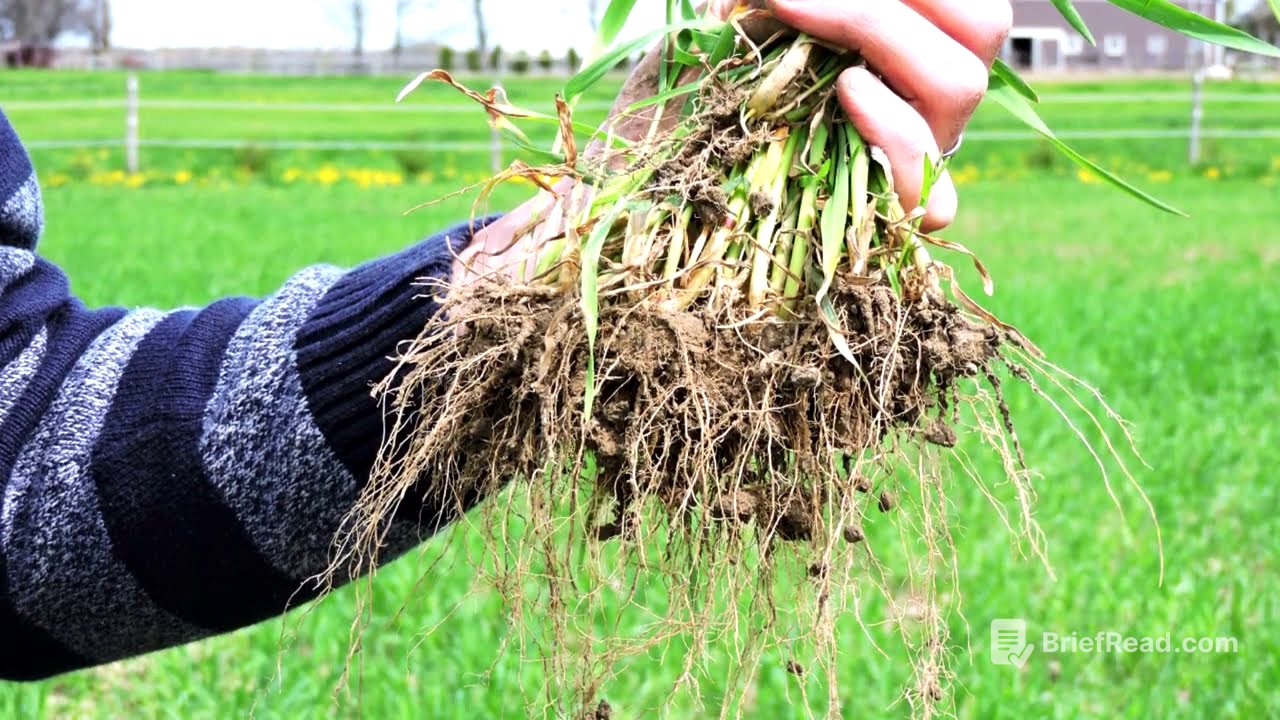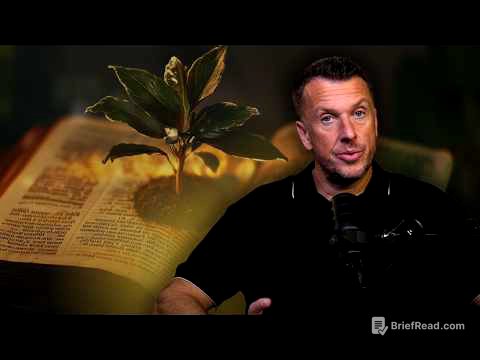TLDR;
This video highlights the issue of soil erosion on agricultural land and introduces a proactive approach taken by farmer Ian Matheson to combat this problem. Matheson removed a degraded three-acre section from production and planted it with a forage crop to rebuild soil health and improve water and nutrient retention. The goal is to restore the land's productivity and resilience to extreme weather conditions.
- Soil erosion leads to loss of organic matter, water, and nutrients.
- Ian Matheson uses a forage crop to restore degraded soil.
- The project aims to improve soil structure and moisture retention.
- The approach helps crops withstand drought and heavy rain.
Introduction to Soil Erosion and Land Degradation [0:08]
The video begins by addressing the problem of soil erosion on agricultural land, which can significantly reduce the land's productivity. Soil erosion results in the loss of topsoil, which contains essential organic matter responsible for storing water and nutrients. This degradation can render areas unprofitable for farming due to reduced fertility and water-holding capacity.
Ian Matheson's Proactive Approach [0:21]
Ian Matheson, a farmer from Oxford County, has implemented a proactive strategy to improve the organic matter in a section of his land that was showing signs of degradation. He took three acres out of production and planted a forage crop. This area will remain untouched for three years as part of a trial to assess whether this method can restore soil health and improve the economic return from that part of the field.
Benefits of Soil Restoration [0:42]
Matheson believes that investing time in rebuilding neglected soil can be highly beneficial. The primary goals are to restore the soil's moisture-holding capacity and improve its structure, making it less susceptible to erosion. He emphasizes the importance of avoiding tillage on slopes and maintaining continuous cover to hold the soil together. This approach aims to sustain the soil improvement process even after the initial restoration phase.
Weather Resilience and Crop Stability [1:17]
Matheson notes that weather patterns have become increasingly erratic, with alternating periods of drought and heavy rainfall. By implementing the soil restoration project, he aims to enhance the land's ability to withstand these stressful conditions. The improved soil helps to sustain crops during dry periods and prevents excessive loss during heavy rain, ensuring more consistent yields. The project helps to hold the crop together until timely rain arrives, preventing significant crop loss.









